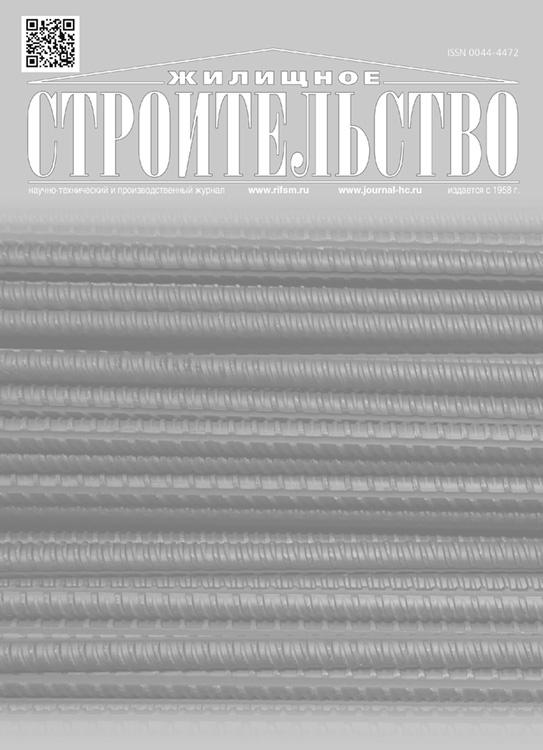Methods of urban heritage regeneration by means of integrated landscaping. Part 1. Basic concepts of legislation and regulatory documents
- 作者: Belyaeva E.L.1, Belyaev A.Y.1, Moginov B.G.1
-
隶属关系:
- Institute of Geobiospheric Research
- 期: 编号 7 (2025)
- 页面: 49-60
- 栏目: Articles
- URL: https://rjeid.com/0044-4472/article/view/688668
- DOI: https://doi.org/10.31659/0044-4472-2025-7-49-60
- ID: 688668
如何引用文章
详细
The issues of ensuring the preservation of the historical cities urban heritage by means of integrated improvement with the networks and grids reconstruction, including architectural planning, engineering, landscape, geoecological, restoration and other preservation ensuring methods of the cities historical heritage are considered on an interdisciplinary basis. The performed initiative study corresponds to the current and planned national projects goals and state programs in the field of urban planning, cultural heritage preservation and engineering communications modernization in 2025–2027, as well as the President of the Russian Federation.V.V. Putin instructions to the Government of the Russian Federation, following the results of the Address to the Federal Assembly for 2024 to strengthen attention to the cultural heritage preservation and to develop a mechanism of investors involved in cultural heritage site preservation support. The article considers the experience and modern tasks of ensuring the Moscow’s natural and historical heritage preservation by urban planning means, including issues of planning regulation of the territories usage, improvement, landscaping, and network reconstruction. In the first part of the article, based on the author’s experience, an interpretation of two important normative concepts is proposed – “natural and historical heritage zones” and “disturbed historical environment”, their meaning is revealed and their implementation in modern urban planning practice of a natural and ecological framework forming with Moscow natural and historical parks inclusion are shown. The problems of improving the methodology of specially protected natural areas system transformations into specially protected green areas are shown. Based on the results of the field surveys, an assessment of the quarters inside the Garden Ring “historical environment disturbance” is given.
关键词
全文:
作者简介
E. Belyaeva
Institute of Geobiospheric Research
编辑信件的主要联系方式.
Email: igbi@yandex.ru
Candidate of Sciences (Engineering), RAACSc’s Advisor
俄罗斯联邦, 12, Annensky Passage, Moscow, 127521A. Belyaev
Institute of Geobiospheric Research
Email: igbi@yandex.ru
Candidate of Sciences (Engineering)
俄罗斯联邦, 12, Annensky Passage, Moscow, 127521B. Moginov
Institute of Geobiospheric Research
Email: igbi@yandex.ru
Honored Architect of the Russian Federation
俄罗斯联邦, 12, Annensky Passage, Moscow, 127521参考
- Belyaeva E.L. Osobennosti blagoustrojstva i ozeleneniya istoricheskih gorodov. Metodicheskie rekomendacii: Monografiya [Features of improvement and landscaping of historical cities. Methodological recommendations, Monograph]. Moscow: Ekon-Inform. 2021. 270 p. EDN: YRVCHX
- Moskva-Parizh. Priroda i gradostroitel’stvo [Moscow–Paris. Nature and Urban Planning]. Edited by N.S. Krasnoshchekova and V.I. Ivanova, Moscow: Inkombuk. 1997. 208 p.
- Chistyakova S.B. Belyaeva E.L. The use of urban ecological approaches to urban improvement and greening. Fundamental, exploratory and applied research of the Russian Academy of Natural Sciences on scientific support for the development of architecture, urban planning and the construction industry of the Russian Federation in 2020: Collection of scientific papers of the Russian Academy of Natural Sciences in two volumes. Vol. 1. Russian Academy of Architecture and Building Sciences. Moscow: Publishing House of the DIA, 2021, pp. 416–422. (In Russian). EDN: WGBFU
- Semenov V.N. Blagoustrojstvo gorodov [Urban improvement]. Moscow: Printing house of P.P. Ryabushinsky. 1912. 184 p.
- Howard E. Goroda budushchego [Cities of the future]. Moscow: Sakura, 1992. 208 p.
- Kiseleva T.E. Local urban development plan (plan local d’urbanisme) as a basis for urban development policy in France. Arkhitektura i Sovremennye Informatsionnye Tekhnologii. 2022. No. 2 (59), pp. 69–79. (In Russian). EDN: KOWWER. https://doi.org/10.24412/1998-4839-2022-2-69-79
- Gutnov A.E. Gorod v teorii sistem. V kn.: Goroda i lyudi: Stat’i, vystupleniya, doklady, interv’yu [The city in the theory of systems. In: Cities and People: Articles, speeches, reports, interviews]. Moscow: Ladya. 1993. 317 p.
- Nashchokina M.V. Architectural multi-style in Russian architecture of the late XIX – early XX century as a national phenomenon. Khan-Magomedov readings: Collection of reports of scientific conferences. Iss. 2. Moscow: Kolo, 2012, pp. 150–154. (In Russian).
- Nashchokina M.V. Arhitektura Moskvy epohi moderna v tvorcheskih biografiyah zodchih [Moscow’s Art Nouveau Architecture in the architects creative biographies]. Moscow: Progress-Tradition, 2023. 656 p.
- Belyaeva E.L. Problematics and scientific content of modern landscaping of historical quarters of Moscow. Academia. Arhitektura i Stroitel’stvo. 2025. No. 1, pp. 91–101. (In Russian). https://doi.org/10.22337/2077-9038-2025-1-91-101
- Regame S.K., Bruns D.V., Omelianenko G.B. Sochetanie novoj i slozhivshejsya zastrojki pri rekonstrukcii gorodov [The combination of new and established buildings during urban reconstruction. Moscow: Stroyizdat. 1989. 143 p.
- Krogius V.R. Istoricheskie goroda Rossii kak fenomen ee kul’turnogo naslediya: osnovy identifikacii, svodnaya harakteristika, analiticheskaya vyborka [Historical cities of Russia as a phenomenon of cultural heritage: the basics of identification, summary characteristics, analytical sample]. Moscow: Progress-Tradition, 2009. 310 p.
- Kedrinsky A.A. Osnovy restavracii pamyatnikov arhitektury. Obobshchenie opyta shkoly leningradskih restavratorov [Fundamentals ofarchitectural monuments restoration. Generalization of the Leningrad school of restorer experiences]. Moscow: Fine Arts, 1999. 182 p.
补充文件












